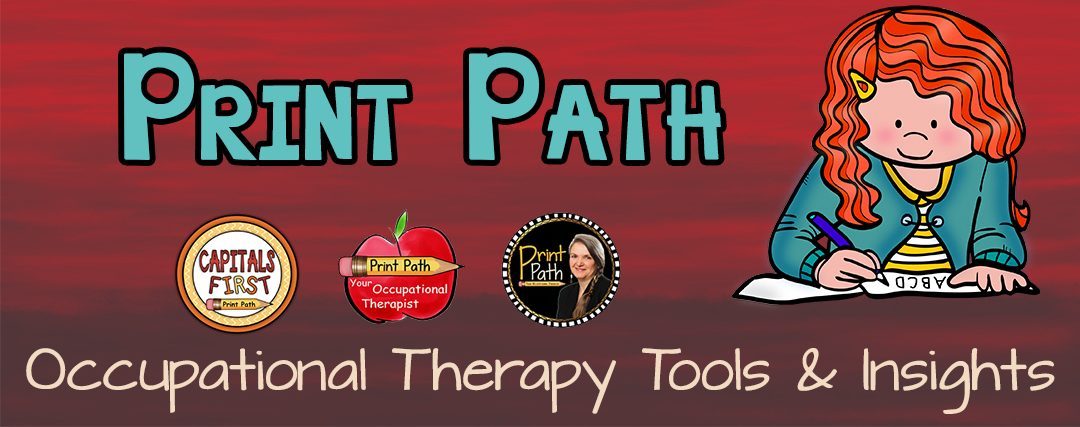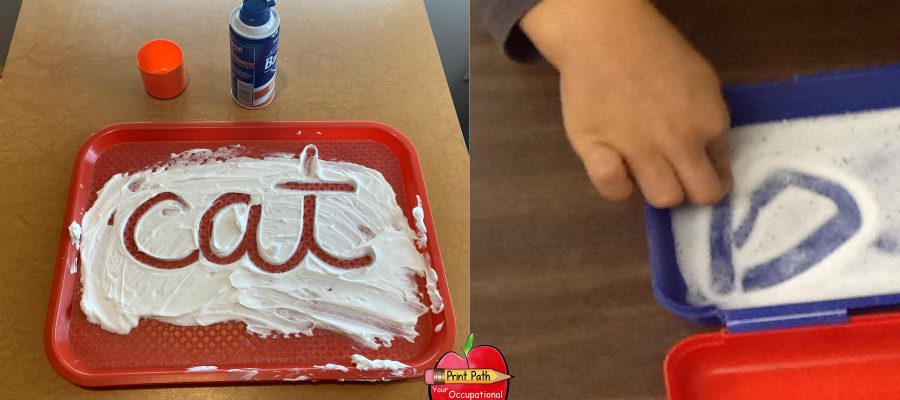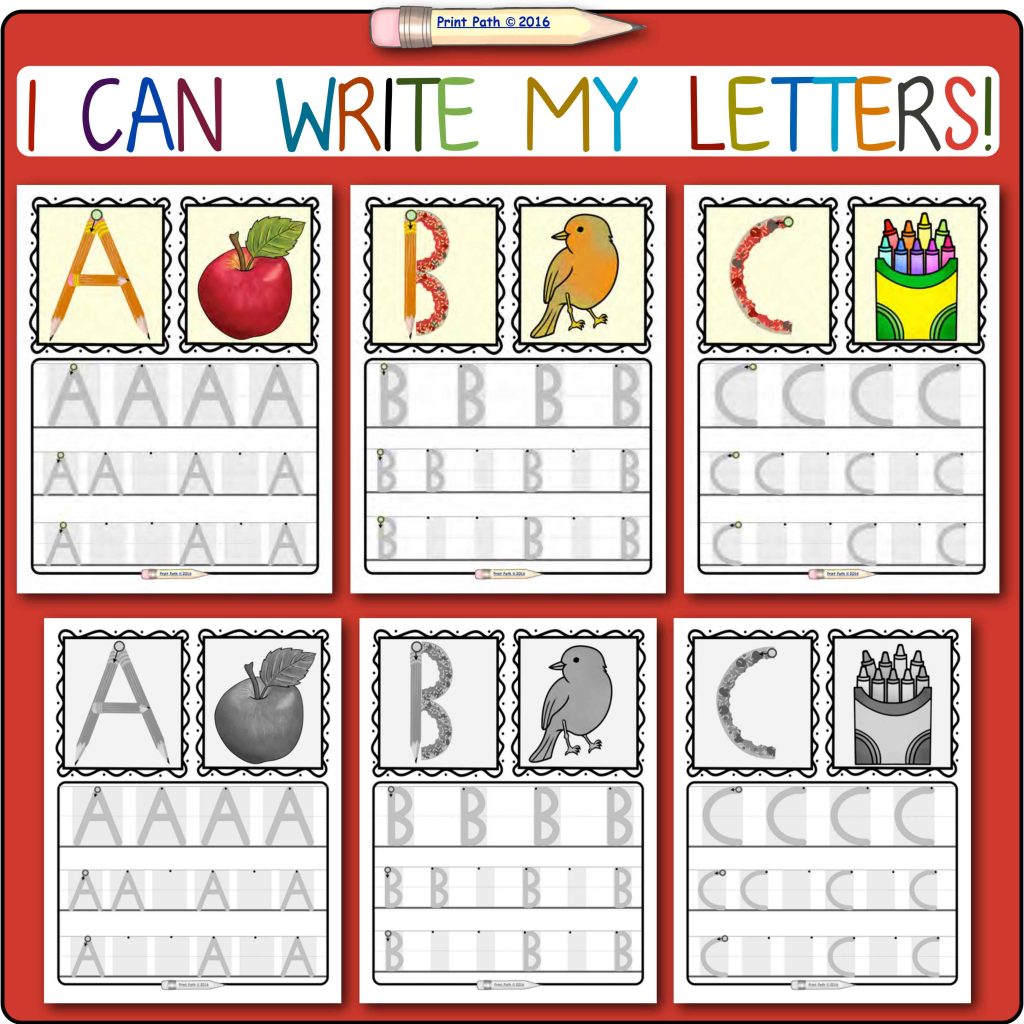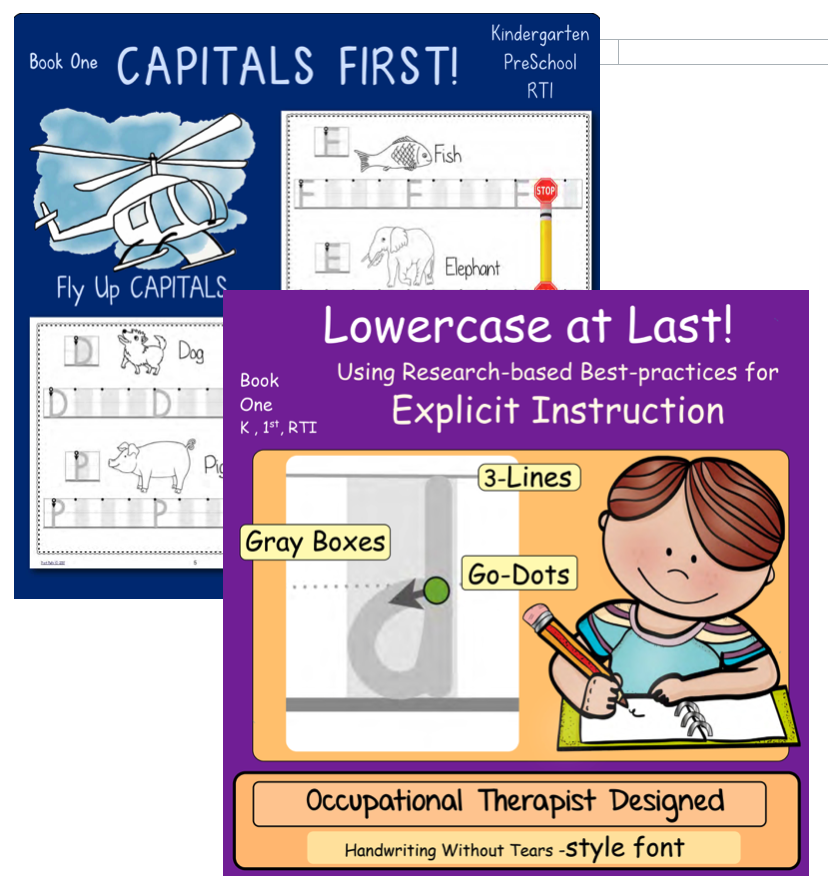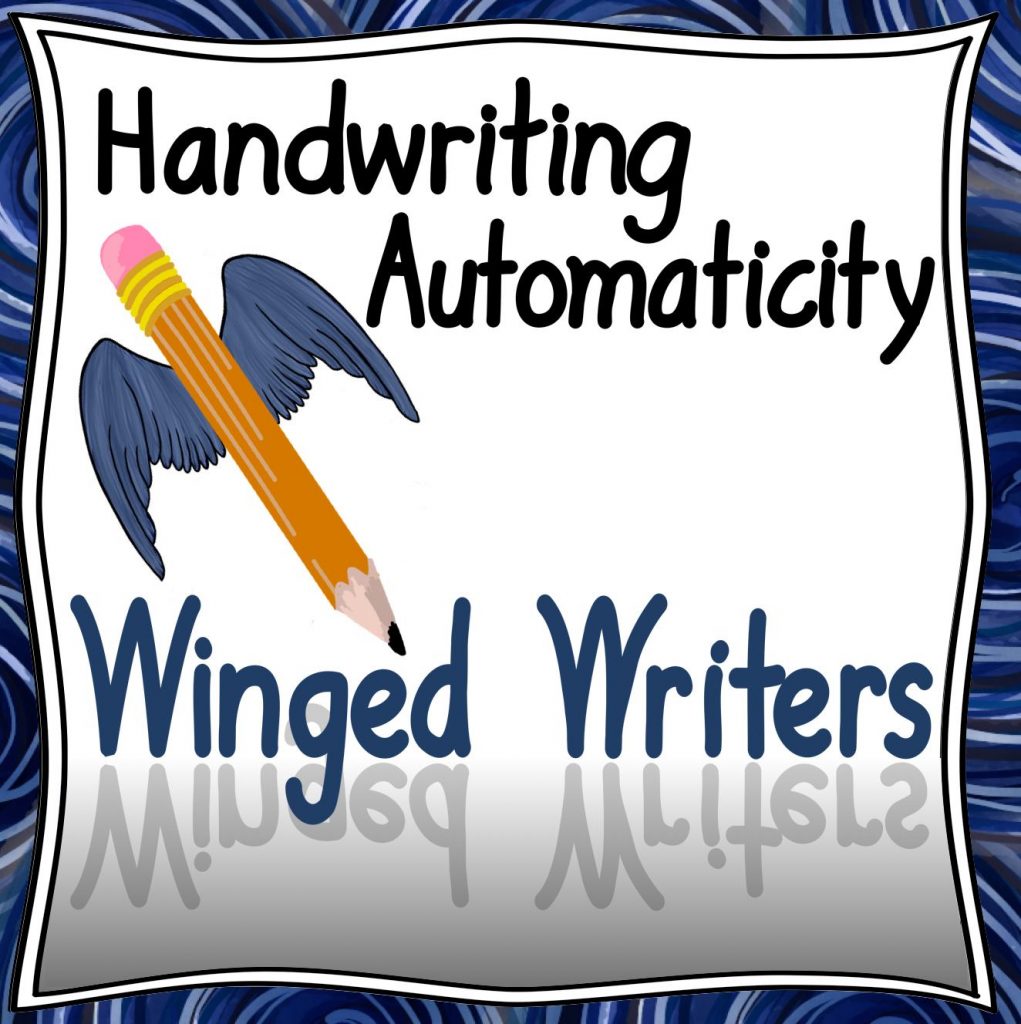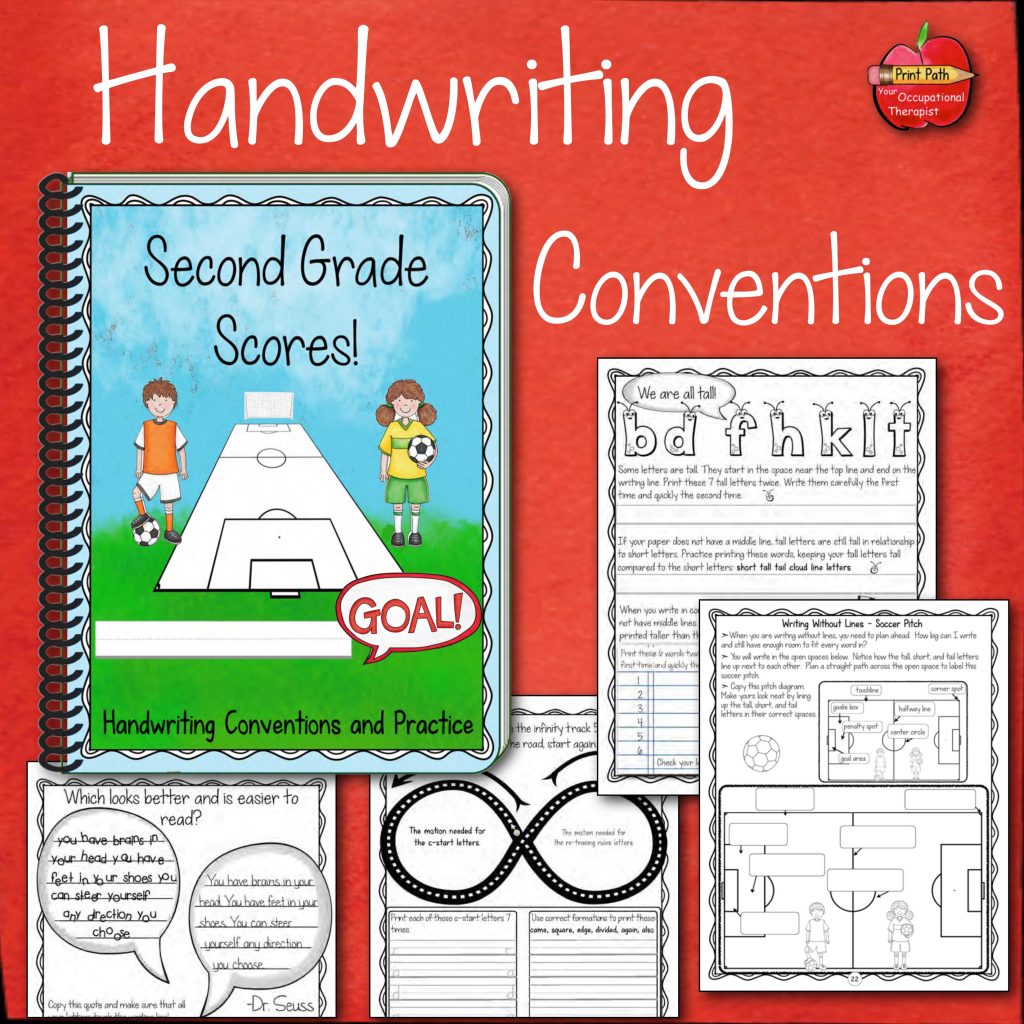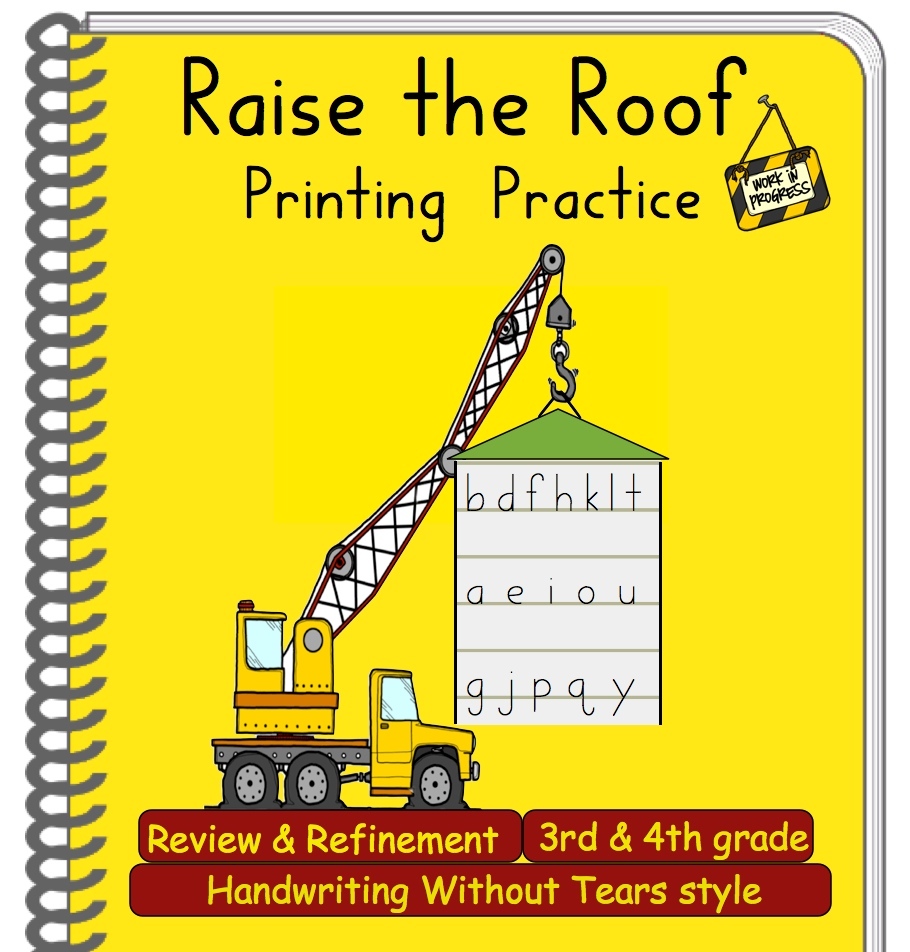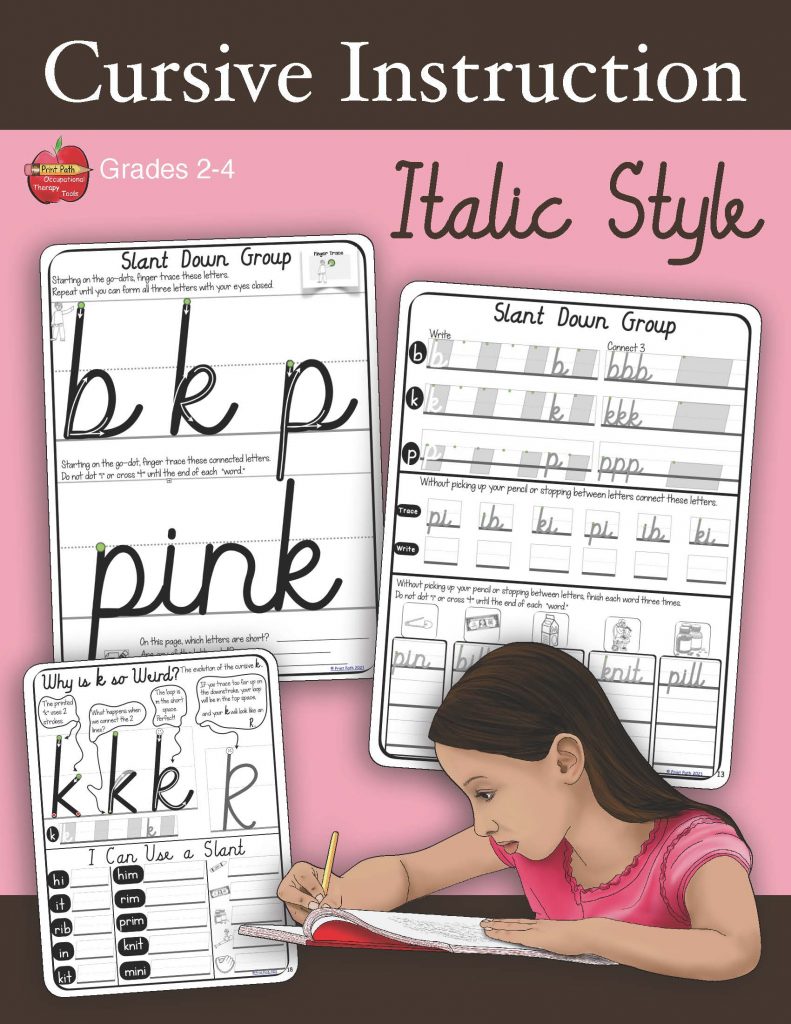After years of teaching handwriting to individual clients and classrooms full of kids, I have become a big believer in the use of multisensory activities to facilitate learning. Today I want to show you several favorite activities and methods you can incorporate into your teaching. Because this is such a fundamental aspect of my therapeutic approach as an OT, I can hardly believe I’ve never published a blog on this important subject before.
Aside from pencil and paper, how else can kids practice handwriting?
Copy Letters or Words on Vertical Surfaces Such as a
Whiteboard or Chalkboard

Writing on a board is a great way to simplify visual perception and utilize large muscle movement.
Shaving Cream or Finger Paint
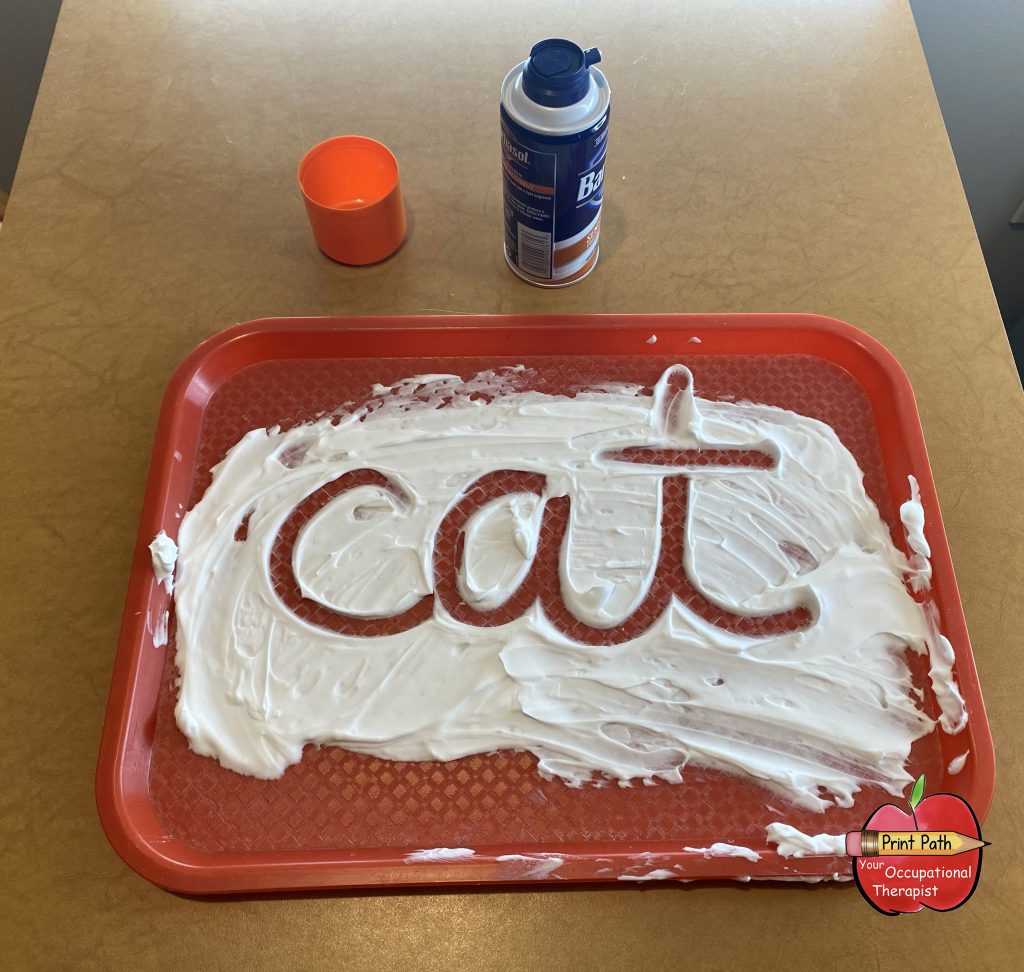
Since we generally associate this activity with preschool kids, you might think third or fourth grade kids practicing cursive would look down upon it. Not so! My experience is that nearly every preschool and elementary age kid loves writing in shaving cream on trays or directly on the table. Personally, I no longer use finger paint but switched to $1 cans of shaving cream from Dollar Tree.
Index Finger Tracing
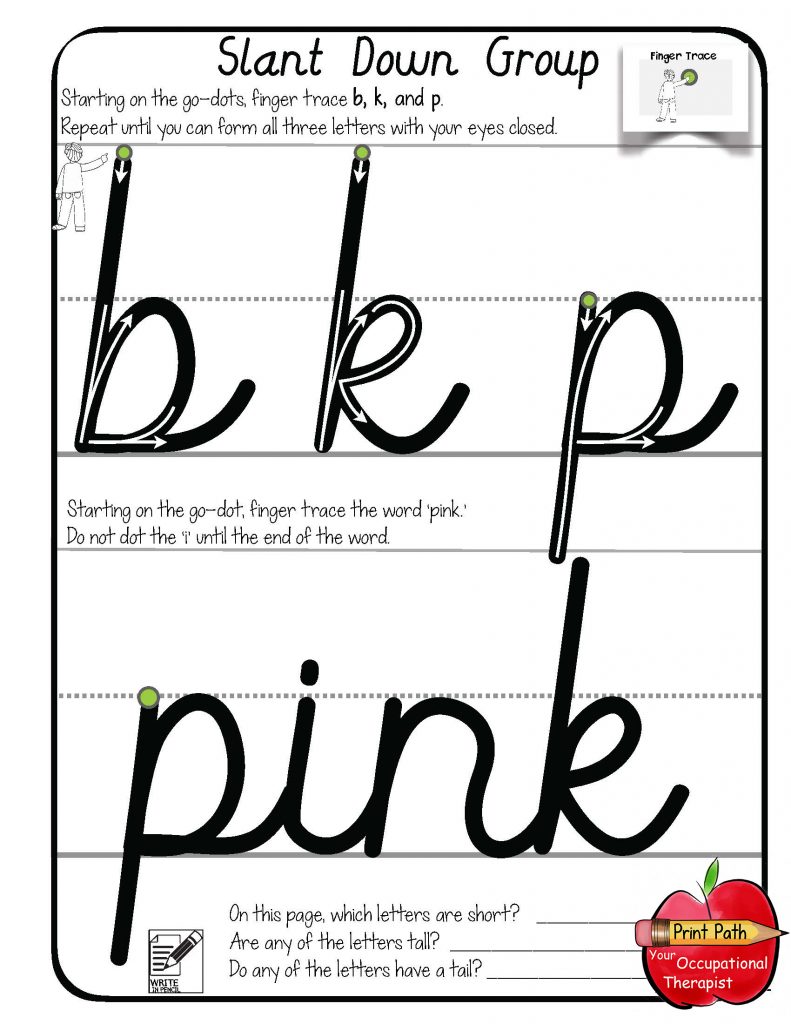
Finger tracing large-font letters is a great way to learn a new motor plan. A high-quality curriculum will provide students with go-dots and clearly defined directional arrows.
Tracing or Writing on Gel Bags
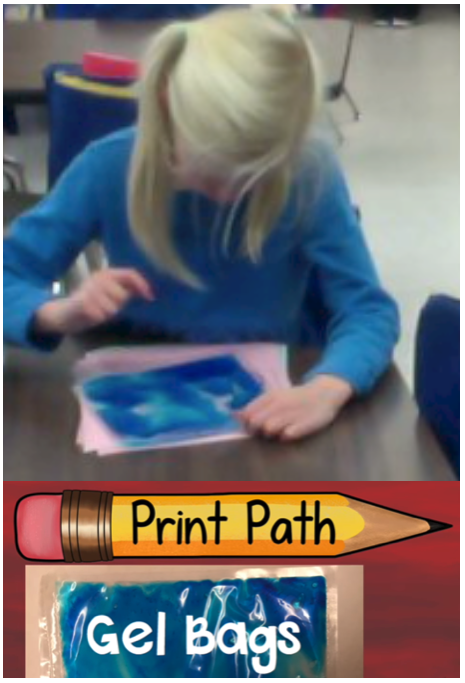
Gel bags are a huge favorite for kids of all ages! You can just put hair gel in a zip-lock bag, but I recommend making durable gel bags. Check out my how-to here.
Using a Slant Guide to Check for Consistent Slant
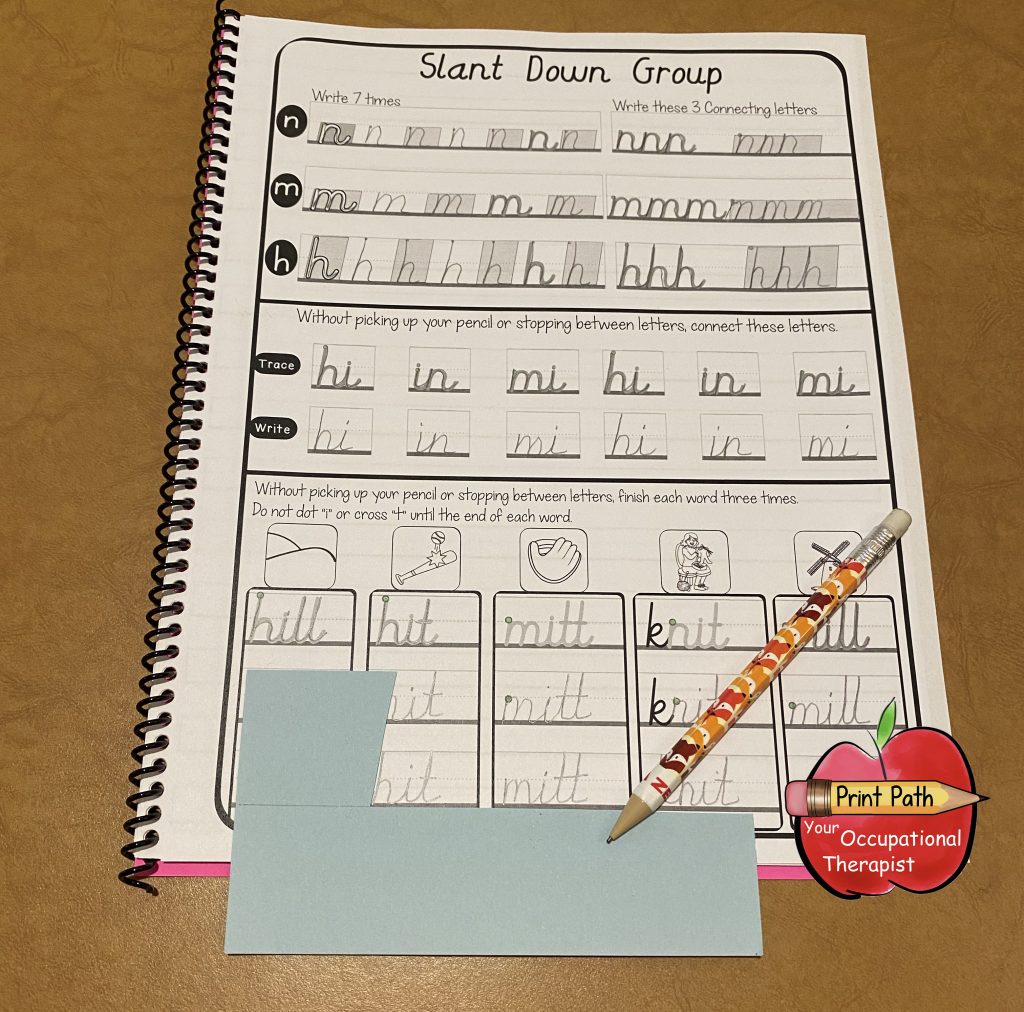
When learning cursive, an important component of legibility is learning to use a consistent slant. Teaching students to use a slant guide will help them monitor their own work.
To make a slant guide: use card-stock or cut from 3×5 cards. Slant guides can be cut at a greater or lesser angle to adjust to the natural slant of the child’s writing. The goal is for each student’s slant to be consistent within their own writing.
Copy Using Sand or Rice in Trays or Pencil boxes
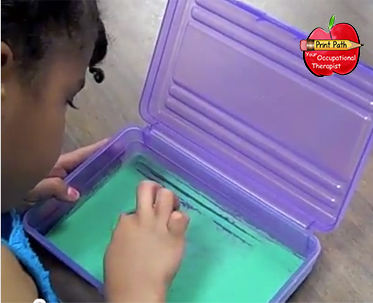
With tray or box on table, have children gently shake to erase letters.
Magnet Boards
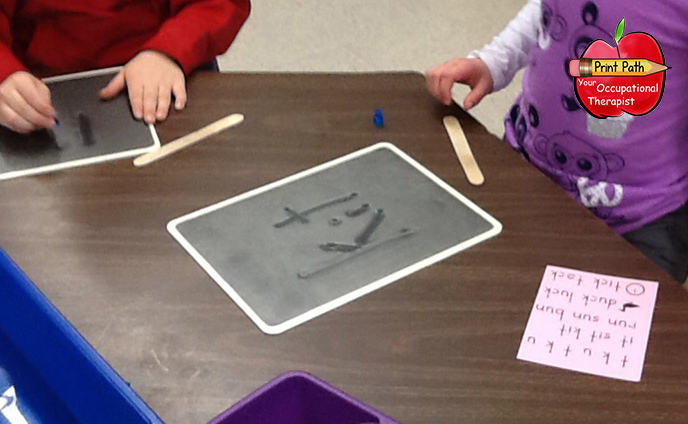
The pictured magnet boards are sold by Imaginetics under the name of Gel Boards. They can be purchased through Target, Walmart, in bundles of six.
A word of caution: don’t use the magnet pens that are included as they will scratch the boards. I use “magnet pins” which can be purchased on Amazon and encourage a nice tripod pencil grasp.
Tracing on Tablet or iPad
For children who are first writing – and by that I mean tracing letters – there are a few excellent and highly motivating apps. The danger here is to overuse. For each letter, tracing on the app should be done right before putting pencil to paper. This way, apps can be used with your preferred handwriting curriculum.

Letter School is a really fun app for preschoolers who are learning capital letters or kindergartners who are learning capitals and lowercase. Be sure to select your preferred handwriting font. I typically teach HWT stlye printing.

Writing Wizard has both a cursive and a printing version. Both offer a variety of in-app fonts.
I recommend using Writing Wizard with children first grade and above.
Be sure to go to settings to select the type of font you’re teaching. Additionally, I use the “5 star” mode and adjust the difficulty based on the child’s need.
Check here for more details on therapeutic use of a tablet or iPad .
Find the Ideal Handwriting Curriculum
for Your Student
Check out these blog posts to find out more about:
7 Essential elements of Effective Cursive Instruction
The Advantages of Teaching Italic Cursive
